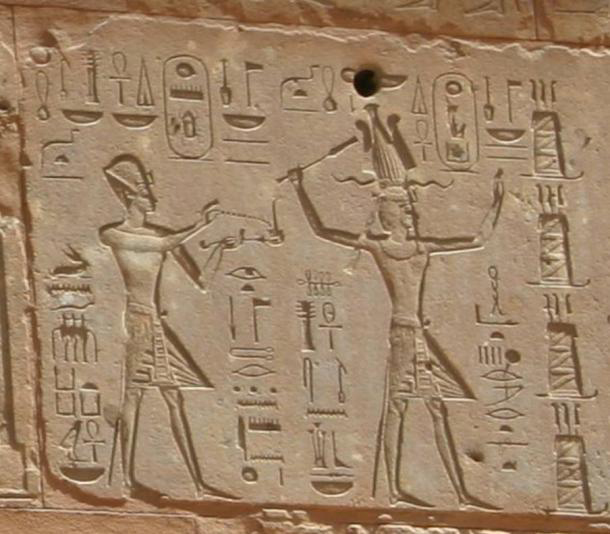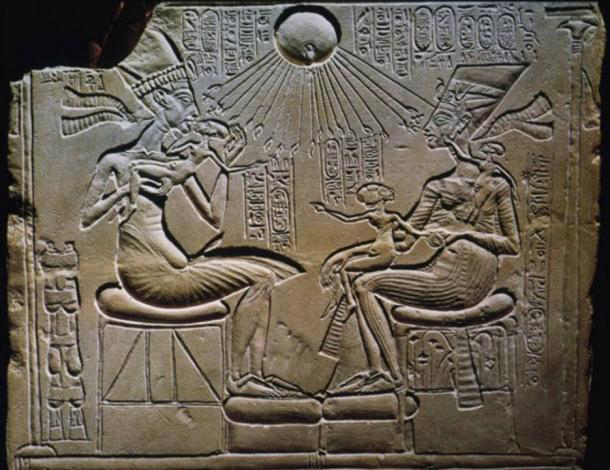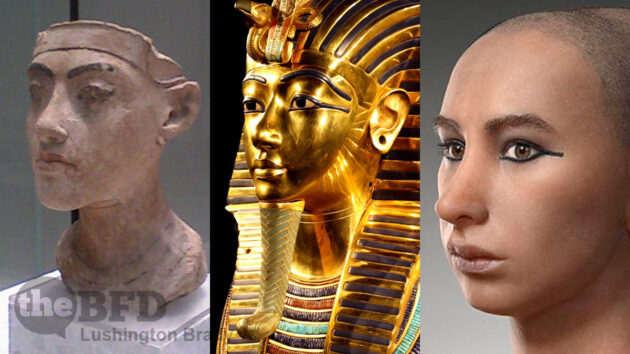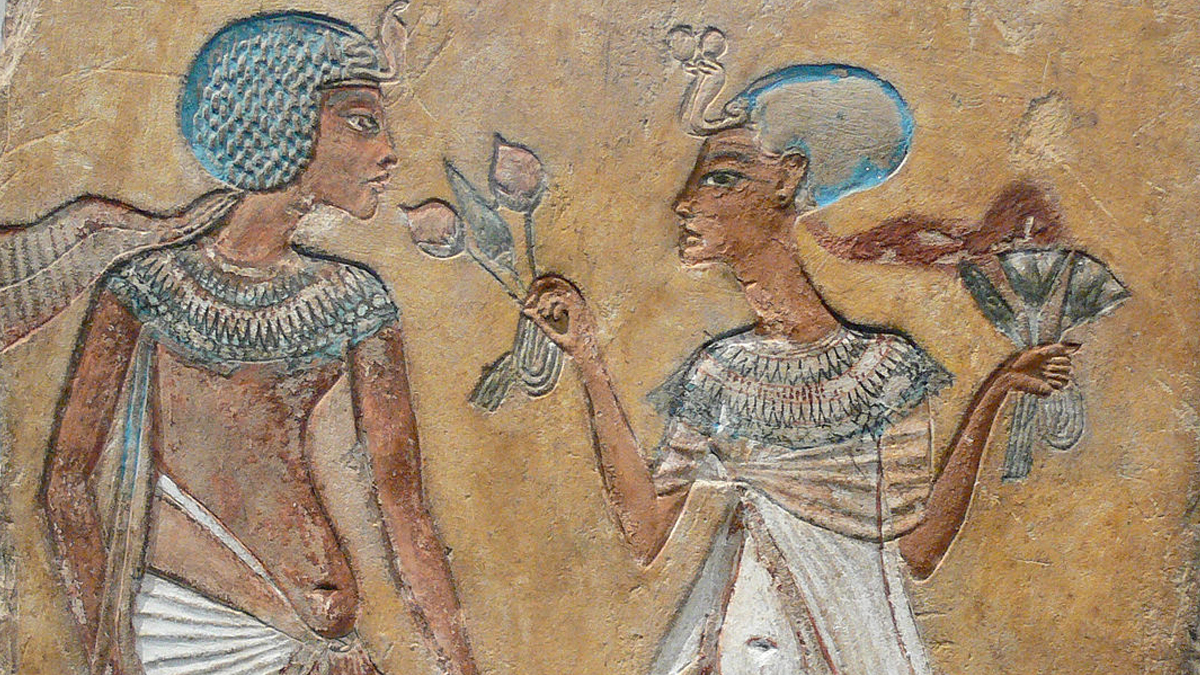As recently reported by The BFD, a recent, remarkable discovery in Egypt has uncovered a “lost city” at Luxor, abandoned when the heretic pharaoh Akhenaten moved the royal seat to a new capital at Akhetaten (now called Amarna). The move was part of Akhenaten’s attempt to radically reframe Egyptian religion around his own monotheistic religion, worshipping the sun god “Aten”.
Akhenaten didn’t just upend Egyptian religious traditions, he radically changed its artistic traditions as well. Akhenaten may have only ruled for less than two decades, but the Amarna period, from about 1353-1336 BCE, introduced a radical new form of art.
Previous to Akhenaten’s rise to the throne, Egyptian art was stagnant, focused heavily on permanence both of the object and of the subject (most pertinently, the pharaoh) itself.
When Akhenaten became the Egyptian pharaoh in 1353 BCE, he took it upon himself to change the standards of art and culture.
We’re all familiar with the “Walk Like an Egyptian” pose: stiff, arms akimbo in a rigid, stylised pose. The Amarna period introduced something very different.

Naturalistic physical features, familial affection, and the singular god Aten replaced the unrealistic human proportions, rigidity, and god-given leadership images of the past[…]
The portrayal of [Akhenaten’s] body was feminine in nature, making it so that he looked quite androgynous—both masculine and feminine. His torso became slim with hips seemingly wide enough for birthing, and his neck, face, and fingers were elongated. Akhenaten did choose to maintain the beard and diadem of Egypt, as well as the crook of the pharaoh, but his imperfections were highlighted rather than hidden—as noted in his overly long forehead and pudgy belly.

These features might seem as alien and stylised as anything else in Egyptian art, except that recent scientific analyses indicate that they may have, in fact, been quite realistic. Akhenaten’s son was the famous Tutankhamun. Analyses of Tut’s mummy show that the boy king suffered badly from generations of in-breeding. Reconstructions of his likely physical appearance show exactly the same feminised anatomy as the artistic depictions of Amarna.
The stark difference between the Amarna style and traditional Egyptian art can be gauged by comparing an Amarna-period bust of Tutankhamun with his famous, and very traditional, death mask.

There are rumors that Akhenaten was a very sickly man and thus his elongated skull and rounded belly may be attributed to illness. These details included in the art introduced a new sense of realism that had not been present in the past. Images of Akhenaten did not exude the strength of rulers past, making it all too easy to differentiate his images from those of his predecessors.
The body of Akhenaten is further altered as his posture is much more fluid than had previously been seen in Egyptian art. His artists attempted to focus on creating a more genuine vision of the pharaoh, breaking away from the traditional stationary depictions to show movement and emotion.
Instead of rigidity, the focus of Amarna pharaoh art is on the depiction of Akhenaten as a good and kind father, active and actively playing with his children. In Akhenaten, Nefertiti, and their children blessed by the Aten, Akhenaten is depicted with his famous wife Nefertiti and three of his children by her—two girls and a boy[…]by emphasizing the family, Akhenaten attempted to introduce to Egyptian culture the idea that the role of the pharaoh is secondary to the role of a father, as a good leader must be a good caregiver first.
Ancient Origins
To even begin to imagine how radical this must have been, we might consider the infamous – and long-buried – “home movie” documentary of the Royal Family made by the BBC in 1969. Following Akhenaten’s death, Egypt’s priestly class enacted a backlash more thoroughgoing than anything Fleet Street could concoct.
Akhenaten was literally erased from history: his monuments were destroyed, his city was abandoned and religion and culture reverted to traditional styles. Akhenaten was only resurrected by archaeological explorations from the 18th century on. As much of the stonework from his monuments had been re-used (Akhenaten, referred to as “the enemy” and “that criminal”, was turned inwards, so as not to be seen), archaeologists have been able to reconstruct some of the fascinating artwork from the Amarna period.
Please share this article so that others can discover The BFD

